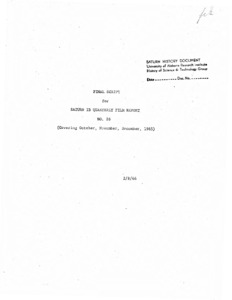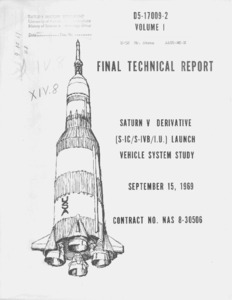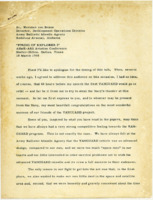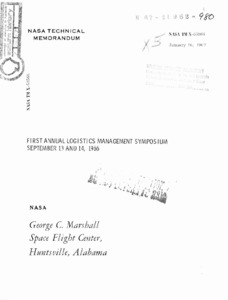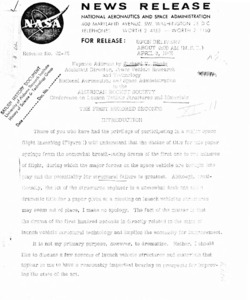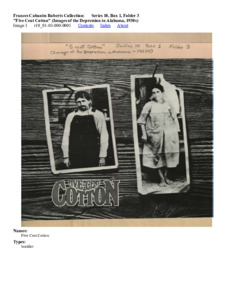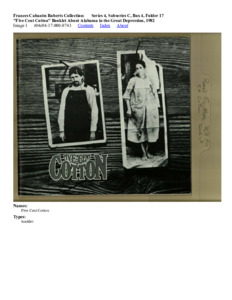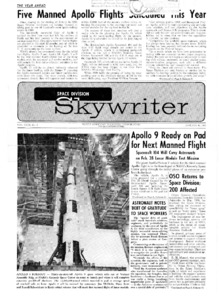
Browse Items (8239 total)
Sort by:
-
"Final Script for Saturn IB Quarterly Film Report, No. 26 (covering October, November, December, 1965)."
Film script for the Saturn Quarterly Film Report - October through December, 1965. -
"Final Technical Report: Saturn V Derivative (S-IC/S-IVB/I.U.) Launch Vehicle System Study: Volume I."
Technical report for September 15th, 1969. -
"Fire inspector, for blasting, transformer on blackboard we make changes in plans. Blueprint reading."
First clip shows some of the construction on the house, namely a worker digging a trench into the house as well as other workers modifying the electric lines to serve their new house. The rest of the film shows the Dannenberg Family (Konrad, Klaus, Ingeborg) looking over plans for what the house is eventually going to look like. Winter 1958. -
"Firing of Explorer I."
This speech was given by Wernher von Braun, then the director of the Development Operations Division at the Army Ballistic Missile Agency, at the 1958 ASME-ARS Aviation Conference in Dallas, Texas. -
"First Annual Logistics Management Symposium: September 13 and 14, 1966."
The proceedings of the First Annual Logistics Management Symposium are forwarded with the hope that the information will be of assistance to attendees and their staffs in the planning and management of logistics support programs. I recognize that there is still much study required before all management techniques and procedures for support programs are known and understood, but I believe that support problems are made easier by exchange of knowledge. The Symposium was based on this belief and we plan to continue the search for ways to achieve better program support at a lower cost. Edmund F. O'Connor, Director, Industrial Operations. -
"First House Construction Sequence."
Film opens showing a lot for sale on Crescent Drive, location unknown. Later, Konrad, Klaus, and Ingeborg Dannenberg arrive to inspect the lot. After parking, they walk over to an area that has been staked out and roped off, presumably the site of some future construction. Konrad Dannenberg's notes on the side of the film box read, "1) General View of the Lot 2) IMK arrives in Rambler 3) Klaus and Peabody on Lot 4) Gen'l. shots of House Location. Film fair, needs explan." 1958. -
"First Hundred Seconds."
Keynote address at National Aeronautics and Space Administration to the American Rocket Society Conference on Launch Vehicle Structures and Materials. Speech focuses on problems facing the structure of Saturn rockets and other space vehicles. -
"Five manned Apollo flights scheduled this year."
News article detailing the planning of five more projects after the successful mission of Apollo 8.
